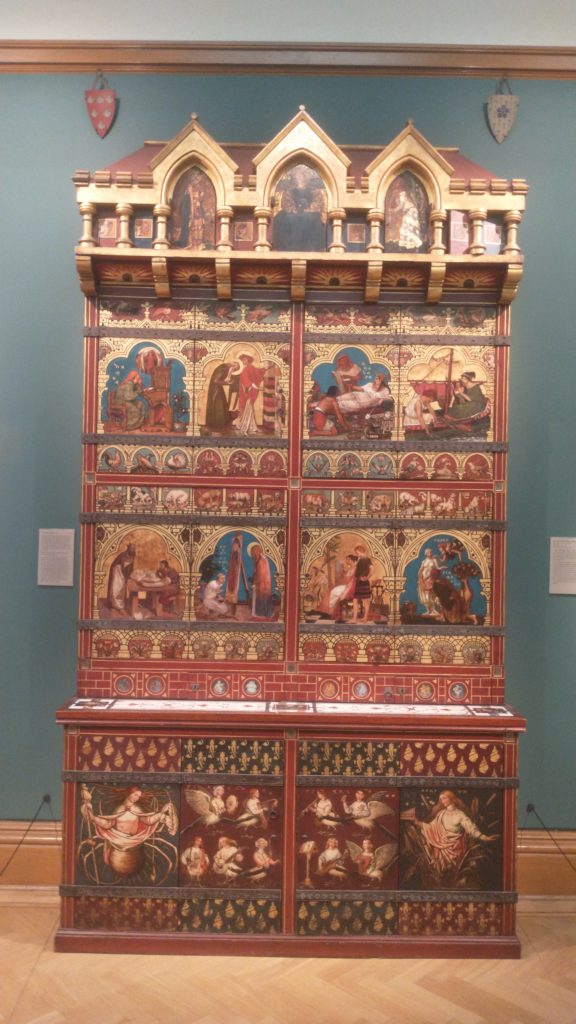
The Ashmolean posts, every year, an online Advent Calendar with gorgeous items behind each ‘flap’. The choice seems to be, mostly, a random selection. But their collection is so wonderful, they are all interesting. Last year, December 12th’s choice was a netsuke; the year before the Singing Pierides painted by Henry Stacy Marks which you can see on the bottom of the Great Bookcase by William Burges (above).
This year it was a nuragi bronze age stature of a shepherd, a screen shot of which I show below.
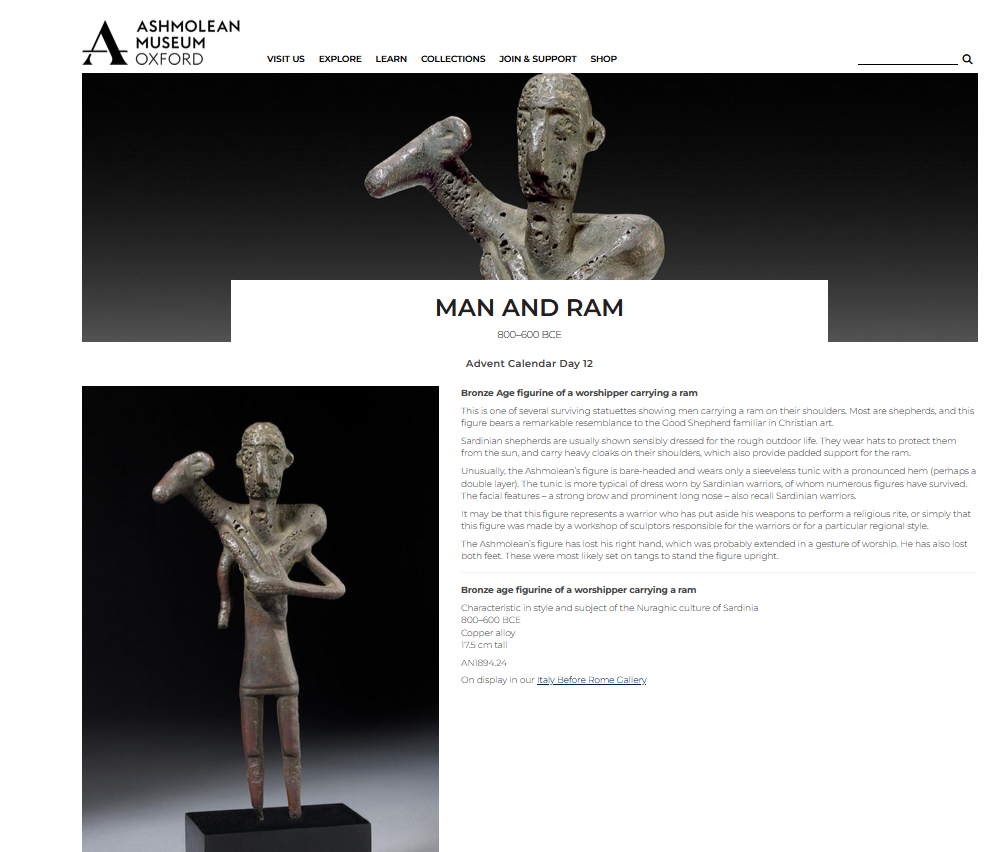
The Nuragic culture in Sardinian is not well known. They lived in round towers called nuraghe, which are a little like the Brochs of Scotland, and they created these marvellous bronze statuettes which give a real insight into life in the Bronze Age. They were around during the time of the Mycenaean Culture in Greece. But their origins and indeed their history are argued about. They may be part of the ‘Sea People’ who brought the end to the Bronze Age cultures of the Eastern Mediterranean or they may not.
Here, in Britain, the Bronze Age is dominated by discussions of henges, barrows, metal axes and swords. But with very little sense of what life was like to live in those days. However, go to the Cagliari Museum and look at these wonderful statues, and it becomes possible to picture the people. Particularly with a copy of ‘Il Popolo di bronzo’ by Angela Demontis to hand. It is a catalogue of Nuragi statures with interpretative drawings. It really bring the people to life depicted in the statues. They are mostly warriors, but there are also people who seem to have more normal trades such as shepherd and baker.
Here is my slight adaption of one of the drawings
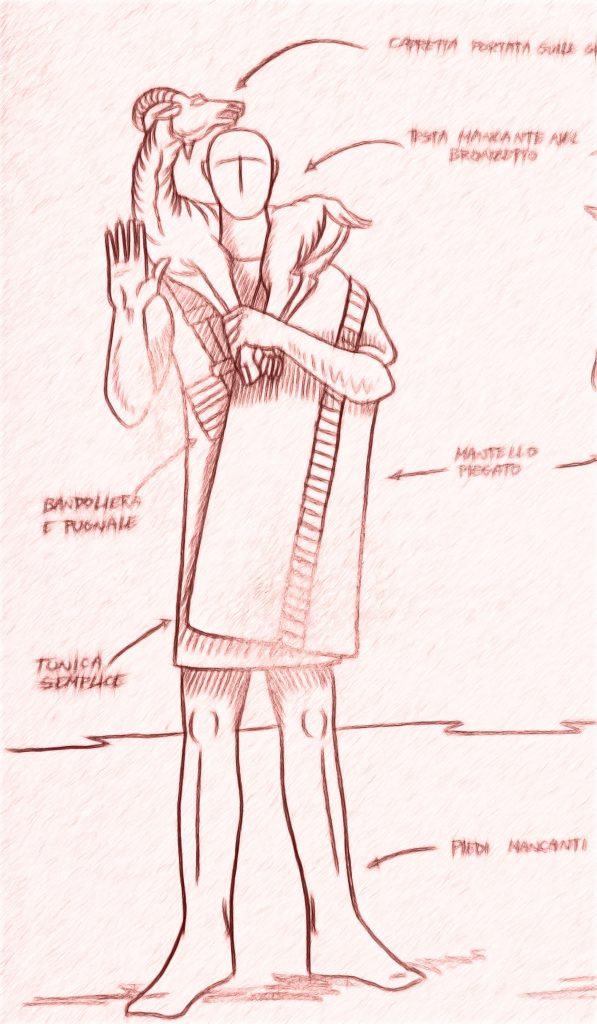
What you can see is some detail of the clothes and the knife belt around the torso and under the cloak, and a living person appears before you, not just a lump of bronze. Wikipedia has a long article on the nuragic culture and you can see some of the bronzes here.
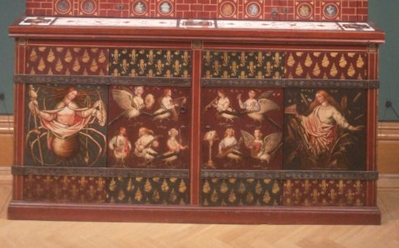
On December 12th 2022, the Advent calendar, which you can access here, highlighted the Great Bookcase by William Burgess and in particular the paintings above which are the Singing Pierides painted by Henry Stacy Marks. The Pierides, were a sort of classical Greek Von Trapp singers, 9 daughters who foolishly challenged the Muses to a singing competition. Of course, the Goddesses of the Arts — the Muses won and had the Pierides turned into songbirds as a warning to all those who overrate their own talents! Watch out all you karaoke singers the Goddesses may have you in their sights!
‘Whenever the daughters of Pierus began to sing, all creation went dark and no one would give an ear to their choral performance. But when the Muses sang, heaven, the stars, the sea and rivers stood still, while Mount Helicon, beguiled by the pleasure of it all, swelled skywards tilI, by the will of Poseidon, Pegasus checked it by striking the summit with his hoof.
Since these mortals had taken upon themselves to strive with goddesses, the Muses changed them into nine birds. To this day people refer to them as the grebe, the wryneck, the ortolan, the jay, the greenfinch, the goldfinch, the duck, the woodpecker and the dracontis pigeon.’
Antoninus Liberalis‘ Metamorphoses (wikipedia)
The bookcase by William Burges was originally displayed as the centre point of the ‘Medieval Court’ of the 1862 International Exhibition. The Exhibition was almost as successful as the more famous Great Exhibition of 1851. Both got about 6m visitors. The 1862 Exhibition was just south of the site of the 1851 (on the south side of Hyde Park) and in the Royal Horticultural Society’s gardens (now the Science and Natural History Museum).
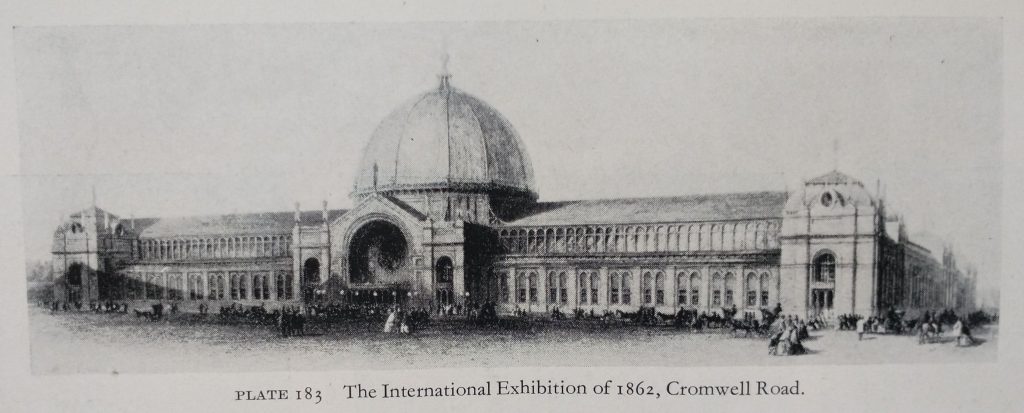
Burges is one of the great Gothic Revival architects and a designer in the Arts & Crafts Movement with an affinity for Pre-Raphaelite painters, 14 of whom he asked to paint panels on his bookcase. The decorative scheme was to represent the Pagan and Christian Arts (Museum label).
Originally written for December 12, 2022, revised and republished December 2023, and the Nuragi added in 2024

Thanks for the link to the lovely advent calendar